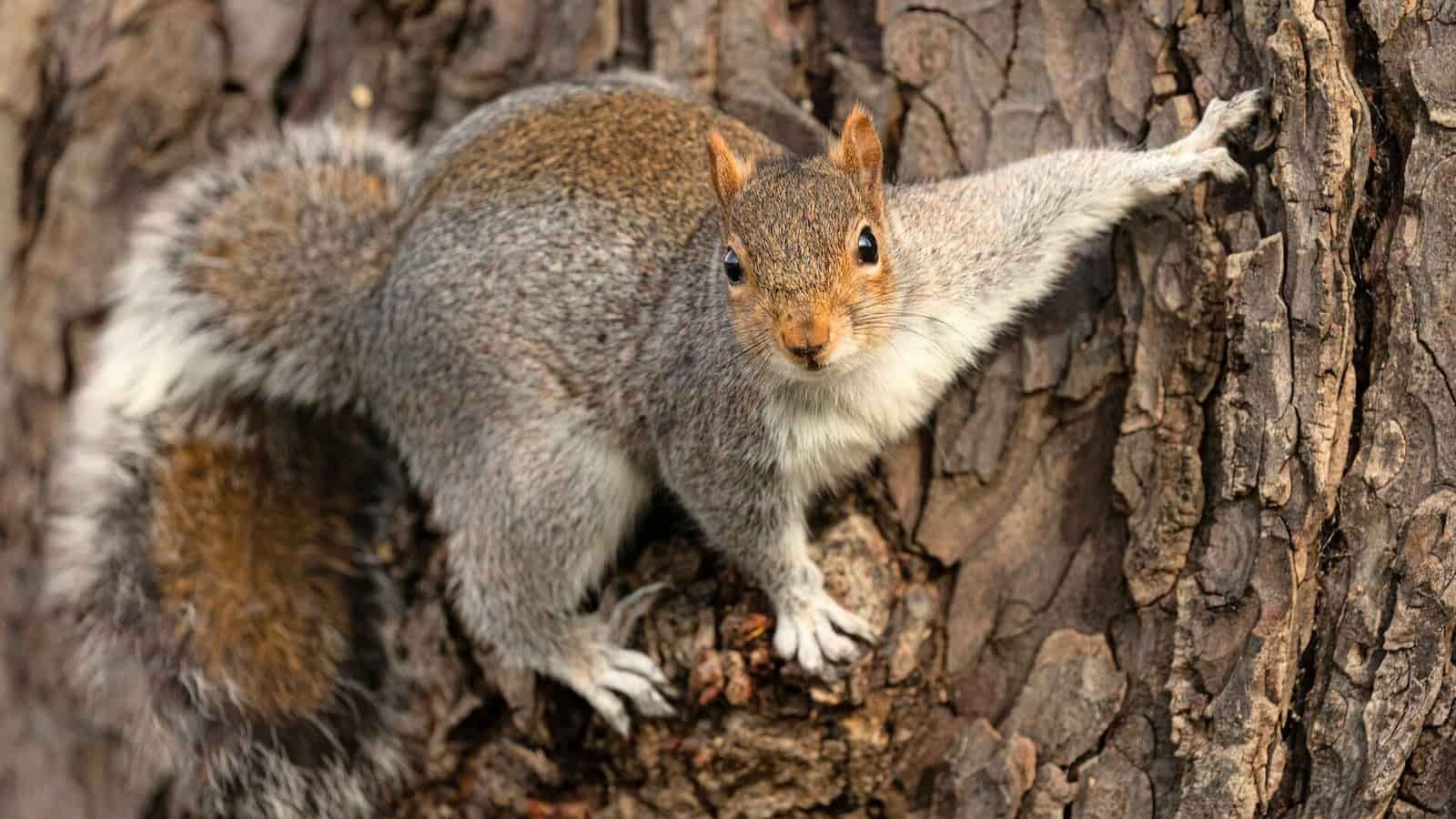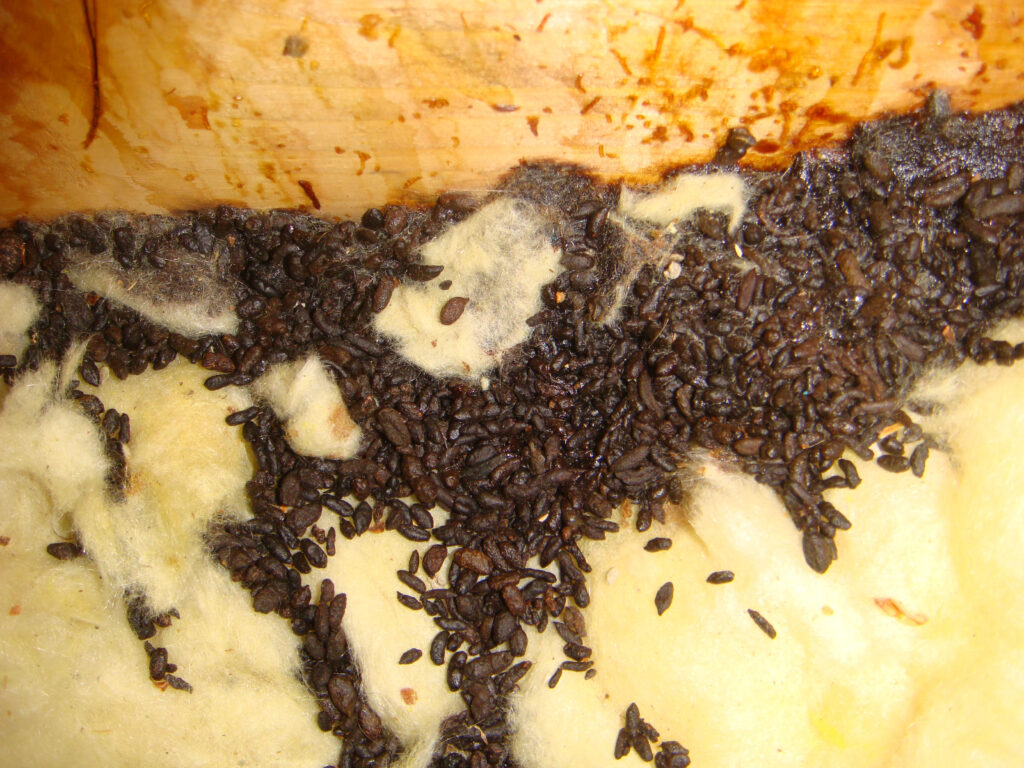Squirrels are some of the most common wildlife you’ll encounter in urban, suburban, and rural areas alike.
Their playful antics, bushy tails, and acrobatic abilities make them fascinating to watch.
However, like all animals, squirrels leave behind more than just their footprints — they leave their droppings too.
While squirrel poop may seem like a trivial subject, understanding it can actually provide insight into their behavior, diet, and potential impact on your home or property.
In this article, we’ll explore everything you need to know about squirrel poop: from its appearance and what it reveals about a squirrel’s habits to how to handle it safely and what to do if you encounter a problem.
What Does Squirrel Poop Look Like?
Squirrel droppings are generally small, cylindrical, and about the size of a grain of rice, though this can vary depending on the species and the squirrel’s diet.
They are usually dark brown or black and have a hard texture. Typically, squirrel feces will be smooth, but they may also have a slight sheen if they’ve recently been excreted.
Key Characteristics:
- Size: 0.5–1 inch long (1.27–2.54 cm)
- Shape: Small, cylindrical, or slightly rounded at both ends
- Color: Dark brown or black, often with a glossy appearance
- Texture: Firm and solid, not crumbly like rodent droppings
Since squirrels are primarily herbivores, their poop will often contain bits of undigested plant material, such as seeds, nuts, and bark.
This can sometimes be visible in the droppings, giving them a rougher texture. In contrast, carnivorous animals like raccoons or foxes produce droppings with a much different appearance.
What Does Squirrel Poop Tell You?
Squirrel droppings can offer a lot of information about their behavior and diet.
- Diet: Squirrels mostly feed on nuts, seeds, fruits, and occasionally fungi or small insects. As such, their feces often contain traces of these foods. If you find squirrel poop around your home, especially near bird feeders or nut trees, it’s a sign that squirrels are in the area and are feeding.
- Health: Healthy squirrel droppings are firm and have a uniform shape. Soft, runny, or foul-smelling droppings could indicate a squirrel is sick, possibly suffering from intestinal parasites or other health issues. It’s also worth noting that infected squirrels may leave behind unusual or more frequent droppings.
Is Squirrel Poop Dangerous?
While squirrel poop is generally not a significant health risk, it can pose certain dangers, particularly if it is not handled properly.
Squirrel droppings, like those of many other wildlife animals, can carry pathogens, parasites, or diseases.
The main concern comes from diseases like Leptospirosis or Salmonella, which can be transmitted through contact with infected feces.
In addition to these diseases, squirrel droppings can carry hantavirus, which can be spread through direct contact or inhalation of dust from dried droppings.
This is a particular concern if the droppings are found in enclosed spaces like attics or basements where airflow might stir up dust.
How to Safely Handle Squirrel Poop
If you find squirrel poop around your property or in areas where squirrels have been active, it’s important to clean it up safely. Here are some steps to follow:
1. Wear Protective Gear:
- Always wear gloves when cleaning up squirrel droppings.
- If the area is dusty or the droppings are dried, wear a mask to avoid inhaling any harmful particles.
2. Clean the Area Thoroughly:
- If possible, dispose of droppings in a sealed bag to prevent exposure.
- Use a disinfectant or a bleach solution (1 part bleach to 10 parts water) to clean surfaces where droppings were found.
- Make sure to clean the surrounding area as well, especially if the squirrels have been in your attic or other confined spaces.
3. Remove the Source:
- If you have an ongoing squirrel problem, consider implementing strategies to keep them out. Seal any holes or entry points to your home to prevent squirrels from nesting in attics or basements.
- Set up deterrents such as squirrel-proof bird feeders, tree trimming, or repellents to keep squirrels from returning.
What to Do If You Have a Squirrel Infestation
If you notice an accumulation of squirrel droppings, especially in areas like your attic, this could be a sign of a squirrel infestation.
Squirrels are notorious for nesting in hidden areas of homes, particularly during colder months, when they seek warmth and shelter.
Here are some steps to take if you suspect a squirrel infestation:
- Inspect the Attic: Check for visible signs of squirrel activity, including droppings, gnawed materials, or nesting areas (often made of insulation or shredded materials).
- Contact a Professional: If you suspect a large infestation, it may be best to contact a wildlife removal expert. These professionals can help safely trap and remove the squirrels, seal up entry points, and advise on how to prevent future infestations.
- Avoid DIY Traps: While tempting, DIY traps can be dangerous for both the squirrels and yourself, especially if they are not properly handled.

Prevention Tips for Squirrel Problems
To minimize the chances of encountering squirrel droppings around your home or property, here are some preventative measures:
- Seal Entry Points: Check your roof, attic, and walls for any cracks, holes, or gaps that squirrels could use to get inside.
- Trim Trees and Shrubs: Squirrels are expert climbers, so ensure that tree branches and shrubs are trimmed away from the sides of your house to reduce their access.
- Remove Food Sources: Secure trash bins and avoid leaving pet food or birdseed outside, as these attract squirrels.
- Use Repellents: There are various natural repellents available, such as peppermint oil or predator urine, which may deter squirrels from settling near your home.
Conclusion
While squirrel poop is a relatively small concern in the grand scheme of things, it can offer valuable insights into squirrel behavior and potential issues with your home.
By understanding what squirrel droppings look like, how to handle them safely, and how to prevent squirrel infestations, you can better manage the presence of these curious critters in your environment.
If you’re dealing with a squirrel problem, taking proactive measures to prevent their entry and removing any nests can help keep your living space clean and safe.
With a little vigilance and some simple precautions, you can coexist peacefully with these fascinating creatures without letting their droppings cause you too much concern.



